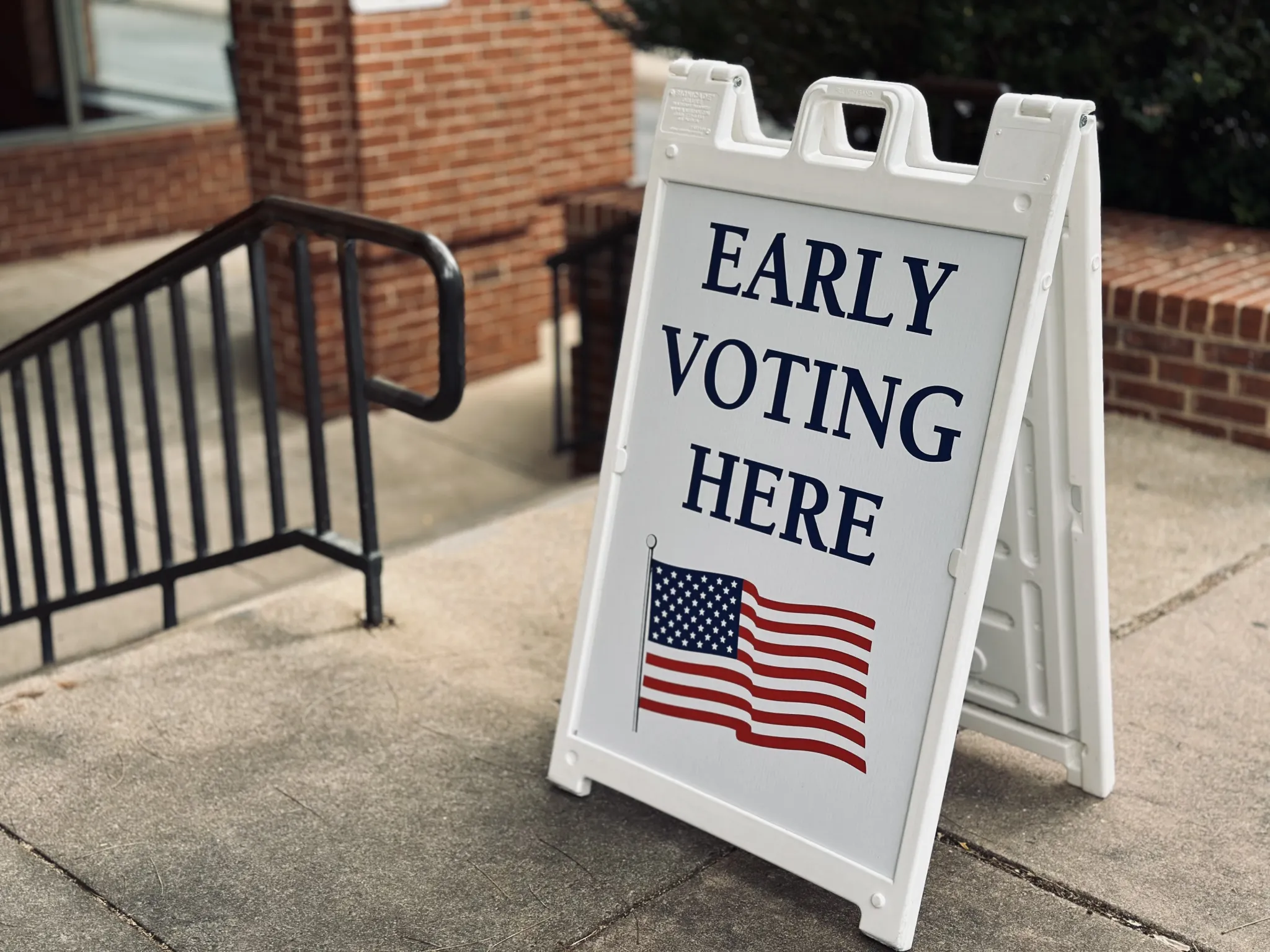Early in-person voting in the United States and across the globe

Ahead of the Tuesday, 5 November general election in the United States, states like Idaho, Minnesota and South Dakota will open for early in-person voting* on 20 September, followed by Virginia, Vermont, North Dakota** and Illinois later in September and 40 more states in October. However, rules for early voting vary by state, as American elections are administered at the state level.
As of September 2024, all but three US states (47 in total), as well as the District of Columbia, Guam, Puerto Rico and the Virgin Islands offer early in-person voting – of which 44 have early voting periods of more than seven days and three have fewer days.
This includes eight states with “mostly-mail” elections (+ D.C.) as all “mostly-mail” states offer some early in-person voting. The National Conference of State Legislatures (NCSL) refers to those as allowing “in-person absentee voting”, which to the voter is a similar experience to early in-person voting, with the difference that the ballot has been mailed to them.
Three states—Alabama, Mississippi and New Hampshire—do not offer early in-person voting, though they may provide options for eligible absentee voters.
The period for early in-person voting in the USA ranges from three to 46 days and typically ends a few days before election day. Early in-person voting may begin as early as 50 days before the election, or as late as the Friday before the election. One consideration for election officials is weekend voting: 22 states offer early voting on the Saturday before the election, with seven allowing local officials to decide, while 17 states permit or leave it to local officials to allow Sunday voting (NCSL).
91 per cent of the American population live in states that permit early voting of more than seven days before election day without requiring an excuse. This means that in theory 9 out of 10 Americans could vote before the end of October, well before the political campaign period has ended. In practice, less than a quarter of eligible American voters vote early in-person, although the figure increased in 2020 during the pandemic, as early voting options expanded (from 16.6% in 2016 to 22.6% in 2020).
Is the USA an outlier when it comes to early voting and how does it compare with the rest of the world?
International IDEA’s Special Voting Arrangements (SVA) Handbook defines early voting “as procedures enabling eligible voters to cast their ballots in person in a controlled environment at designated polling sites before election day” (p. 31). Early voting can consist of submitting a vote at a polling station prior to the scheduled election day or can be combined with other special voting arrangements to submit an early ballot such as postal voting or mobile ballot box voting.
International IDEA identifies early voting as the Special Voting Arrangement most frequently chosen by countries around the world, followed by mobile ballot boxes, postal voting and proxy voting.
International IDEA’s SVA database shows that 38 per cent of countries in the world (78 countries) allow early voting of some kind (while a majority do not allow it), although only 16 countries allow early voting for all voters – 62 countries for some. Compared to many countries, most US states therefore offer fairly generous early voting options.
Early voting for all voters is more common in OECD countries than in non-OECD countries, with 10 countries allowing it in Europe (in addition to Canada and the majority of states in the USA), while early voting for some voters is most common in Oceania (half of countries) and Africa, with 17 countries (33%) allowing early voting for some groups. Each country has different eligibility requirements. For example, in Australia, electors can vote early if they are more than 8km from a polling place, are afraid for their safety, or are about to give birth among other reasons. In Jamaica, the police, military and election day workers can vote early. The same holds in Botswana for election and police officers who will be on duty on polling day.
Figure 1: Early voting around the world
Source: Special Voting Arrangements Database: https://www.idea.int/data-tools/tools/special-voting-arrangements/early-voting, accessed 17 September 2024.
|
Countries allowing early voting for all voters |
|
Andorra |
|
Angola |
|
Colombia |
|
Denmark |
|
Estonia |
|
Finland |
|
South Korea |
|
Latvia |
|
Netherlands |
|
Norway |
|
Portugal |
|
Sweden |
|
Switzerland |
|
USA – 47 out of 50 states |
During the pandemic, many countries expanded early voting arrangements to reduce crowding on election day. The share of voters voting early increased in many countries, according to International IDEA, although a number of countries faced legal barriers to expanding early voting options. In Portugal during the pandemic, early voting increased to 80 per cent of voters and in New Zealand to 58 per cent.
Compared to other special voting arrangements, there are no additional security concerns in relation to casting a ballot through early voting as there is on election day, as early voting follows the same polling station procedures. Early voting can be convenient for people busy on election day and can also reduce waiting times at the polls. For those voting early from abroad, it can give greater flexibility to those who need to travel to an embassy or consulate to cast a vote. The cons of early voting include additional costs to keep polling sites open and staffed, the possibility that voters missing out on additional information emerging later in the campaign period; and the need to securely store ballots from an early vote until counted on election day.
Ensuring that elections are as inclusive and accessible as possible, while upholding electoral integrity, is fundamental to a functioning democracy. Early voting contributes significantly to this goal by providing greater flexibility, mitigating long wait times, and easing the burden on election day. Despite some of the challenges mentioned earlier, early voting remains an essential mechanism for expanding voter participation and ensuring an inclusive democracy.
* Definitions of early voting vary across organizations, US states and countries. In the USA, early in-person voting can be described as early voting, in-person absentee voting or advance voting. The National Conference of State Legislatures (NCSL) categorizes a state as having early in-person voting if the option is available to all voters. Disaggregating further, they describe “early voting” as similar to election day voting, and “in-person absentee voting,” where voters fill out and submit an absentee ballot at a polling place, (both processes may be indistinguishable to voters). The Movement Advancement Project includes both types when they refer to early voting. International IDEA defines early voting as “procedures enabling eligible (all or some) voters to cast their ballots in person in a controlled environment at designated polling sites before election day.”
** Not offered in all counties (NCSL).
This article was written by Oliver Joseph and Annika Silva-Leander, with inputs from Peter Wolf (International IDEA) and Wendy Underhill (NCSL).





